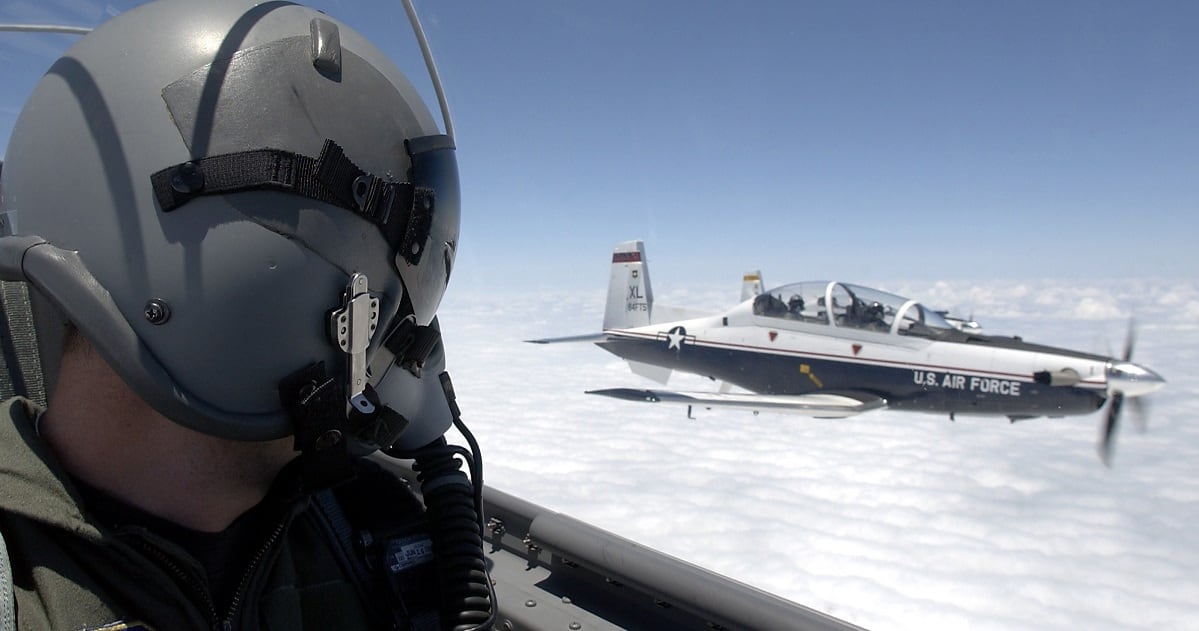The Air Force graduated 1,279 pilots from undergraduate pilot training in fiscal 2019, according to Air Education and Training Command — a marked improvement from the previous hypoxia-plagued year.
A rash of problems with unexplained physiological events such as hypoxia grounded the 19th Air Force’s T-6 Texan trainer repeatedly in fiscal 2018. At the time, the Air Force said the sorties lost as a result of those groundings meant the 19th would graduate about 1,109 pilots in 2018, a roughly 10 percent drop from the 1,235 it has hoped for at the beginning of the year.
But now that the Air Force has put into place a series of fixes for the T-6′s oxygen system, pilot production has recovered. However, it is a little less than the 1,311 pilots the Air Force had originally hoped for in 2019.
The pilot production goal for fiscal 2020 is even higher at 1,480, AETC spokeswoman Jennifer Gonzalez said in an email Tuesday.
The Air Force has pushed to send more students through undergraduate pilot training as part of a broader effort to close a longstanding and serious shortfall in its pilot ranks. That shortfall has consistently hovered around 2,000, or about 10 percent of the overall pilot force.
Former Secretary Heather Wilson told a Senate Armed Services subcommittee in October 2018 that the service hoped to ramp up to produce about 1,500 new pilots annually by fiscal 2022, and maintain that production level in the following years.
Wilson also said at last year’s hearing that the Air Force trained 1,160 new pilots in fiscal 2017.
RELATED

The series of hypoxia and other related problems in T-6s alarmed Air Force leadership, and led to 2018′s dip in pilot production. Hypoxia, a lack of oxygen in the blood, and hypocapnia, a lack of carbon dioxide, are two examples of UPEs that can lead to shortness of breath, dizziness, disorientation or even unconsciousness and cause pilots to crash. These conditions can often sneak up on a pilot so slowly he doesn’t realize what’s happening until the situation has become dangerous — or even potentially fatal.
In November 2017, the 71st Flying Training Wing at Vance Air Force Base in Oklahoma grounded its T-6s for about three weeks after a series of physiological events affecting both instructor and student pilots. The Air Force grounded the entire T-6 fleet for about a month in February 2018 after more such incidents.
After an intensive study throughout most of 2018, the Air Force concluded that rapidly fluctuating oxygen concentrations were to blame. To fix it, the service began periodically purging moisture from the on-board oxygen generating system, or OBOGS, and began redesigning and upgrading the OBOGS.
Stephen Losey is the air warfare reporter for Defense News. He previously covered leadership and personnel issues at Air Force Times, and the Pentagon, special operations and air warfare at Military.com. He has traveled to the Middle East to cover U.S. Air Force operations.




